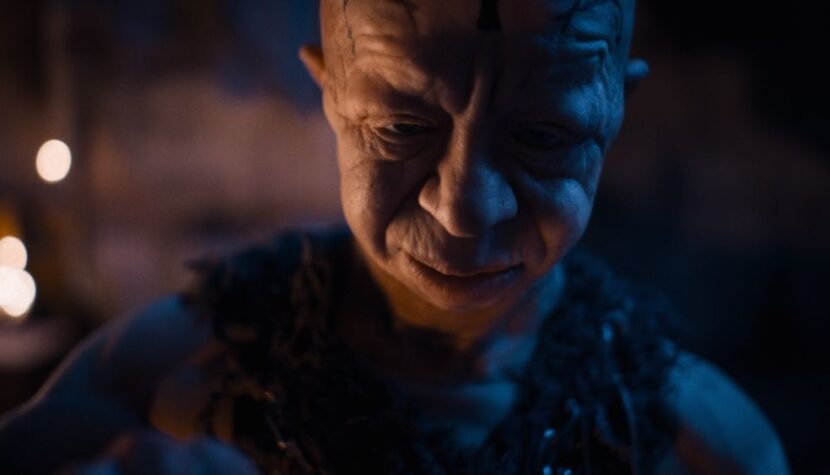BASKIN. A Brutal Horror in the Footsteps of “Hellraiser”

“Hell is not a place we go to. Hell is something we carry within us at all times,” says the demonic Father in Baskin, somewhat paraphrasing the famous words of Jean-Paul Sartre.
Five policemen on the night shift are having a meal at a roadside bistro. Remzi, Arda, Yavuz, Apo, and Seyfi talk about sex and violence, brag about their achievements, and argue with the staff. On their way back to the city, they receive a call to a nearby village. Rushing to the scene, they hit a naked, bloody figure, and their car ends up in a lake. No one is seriously injured, but the car is immobilized, and the figure disappears, so the policemen decide to continue on foot despite local warnings. When they reach an abandoned police station, they find a silent, terrified officer in a state of deep catatonia.
As they explore the building, they discover rooms splattered with blood and entrails, where monstrous beings are sacrificing humans. Leading the cult is a hooded figure known as the Father, who orders his acolytes to chain the policemen and subject them to cruel tortures.

Baskin was developed from a short film of the same title by Can Evrenol, released in 2013. The Turkish director managed to raise around $350,000 to produce his feature-length debut. The pre-production phase lasted a month, the filming, done exclusively at night, took another month, and post-production took an additional two months. Mehmet Cerrahoglu, who played the Father, resembling an adult version of the demonic spawn from Mel Gibson’s The Passion of the Christ (2004), suffers from a very rare skin condition, so no makeup was needed.
Evrenol admitted that Cerrahoglu had a significant impact on the final shape of both his character and the entire film, despite having no prior experience in this field. The director cited Apocalypse Now (1979) by F.F. Coppola, Quest for Fire (1981) by Jean-Jacques Annaud, A Nightmare on Elm Street (1984) by Wes Craven, Hellraiser (1987) by Clive Barker, and The Descent (2005) by Neil Marshall as sources of inspiration.
To this list, one could add European horror cinema from the ’70s and ’80s. Indeed, Baskin looks like what Lucio Fulci’s work might have been if the Italian director had larger budgets and better technology. The fundamental common denominator between the creator of City of the Living Dead (1980) and Evrenol’s film seems to be a triumph of style over substance. Although the Turkish director stated that he sees his film as “a story about dark childhood fantasies, bad news, and blind fate,” and added that he wanted to include “a raw critique of macho culture in a male-dominated society” in which he was born and raised, these declarations are not reflected in the plot. It must be honestly admitted that the plot is somewhat thin, even serving as a mere pretext. There is no deep commentary on the phenomena mentioned by Evrenol, only a superficial gloss.

Is this a criticism? Not necessarily, as not every horror film needs to be a multi-layered work like Roman Polanski’s Rosemary’s Baby (1968) or Andrzej Żuławski’s Possession (1981). If one approaches Baskin with the right mindset—that is, devoid of high expectations and focused on other aspects of the film—the viewing experience is not as painful as with many films where the visual aspect dominates the script.
Baskin compensates for its narrative shortcomings with its impressive form; it is remarkable that with such modest financial resources (compared to Hollywood standards, for example) and little experience, the creators managed to produce such a professional film: stylish, dense with an overwhelming dreamlike atmosphere, well-acted, and excellently shot and lit. The vision of hell in Baskin is so terrifying and brutally unapologetic that it compensates for other flaws. A very promising debut.

